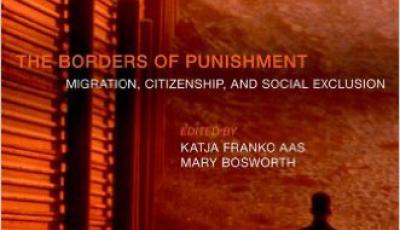A new edited collection by Katja Aas and Mary Bosworth entitled, The Borders of Punishment: Migration, Citizenship and Social Exclusion, has just been published by Oxford University Press. Contributors to The Borders of Punishment critically assess the relationship between immigration control, citizenship, and criminal justice, reflecting on the theoretical and methodological challenges posed by mass mobility and its control. In addition to Aas and Bosworth, authors include Vanessa Barker, Luis Barrios, Hindpal Singh Bhui, Ben Bowling, David Brotherton, Catherine Dauvergne, Matt Gibney, Nico Johansen, Emma Kaufman, Maggy Lee, Dario Melossi, Sharon Pickering, Juliet Stumpf, Thomas Ugelvik, Darshan Vigneswaran, Leanne Weber, and Lucia Zedner.

The book’s title, The Borders of Punishment, alludes, on the one hand, to the literal activities of border control, and on the other hand, to punishment in its extended sense, where its borders become blurred and merge with various forms of migration control, deprivation of welfare, and social exclusion. Finally, the overlapping nature of those subject to internal and external border controls and minority communities within host countries, reveal the enduringly racialized nature of citizenship and its protections.
Such developments solicit in new ways some of the fundamental and enduring questions of criminal justice and criminology: What is punishment? What is crime? What should be the normative and legal foundation for criminalization, for police suspicion, for the exclusion from the community, and for the deprivation of freedom? How, if at all, does popular punitivism shift in relation to foreign citizens? They also raise questions about methodology. Can we understand the prison today, for instance, simply in terms of life within it, when its effect may be felt many continents away? Do qualitative or quantitative techniques developed with citizens in mind, work when applied to foreigners? How might we capture the similarities between criminal justice and migration control while remaining alert to the specific nature of each field and to the vulnerabilities of non-citizens?








